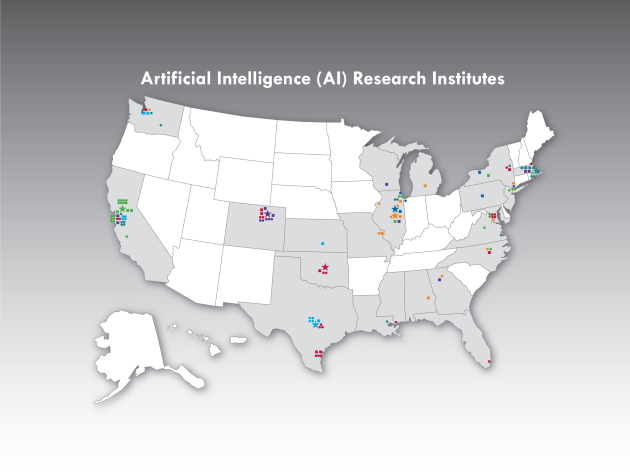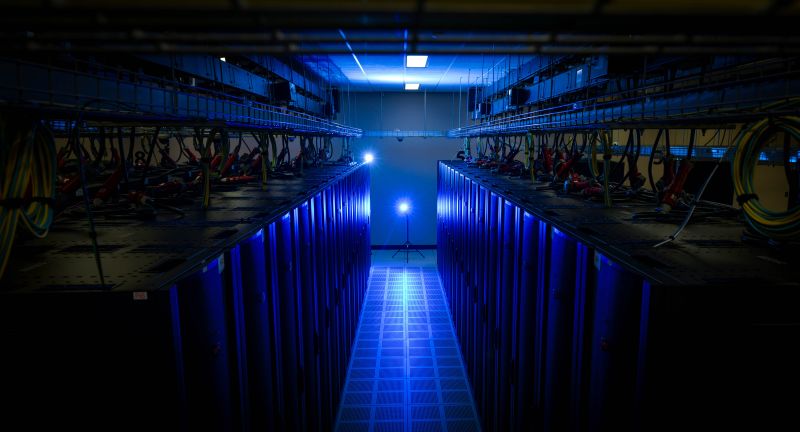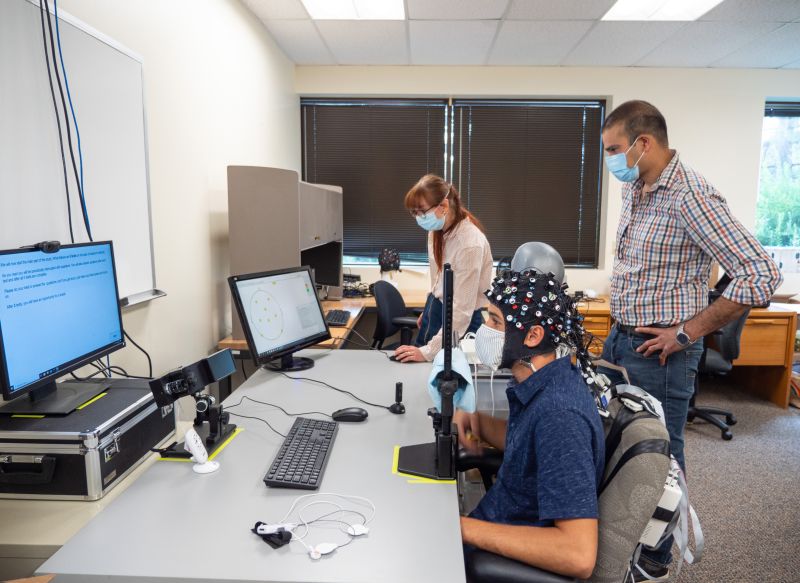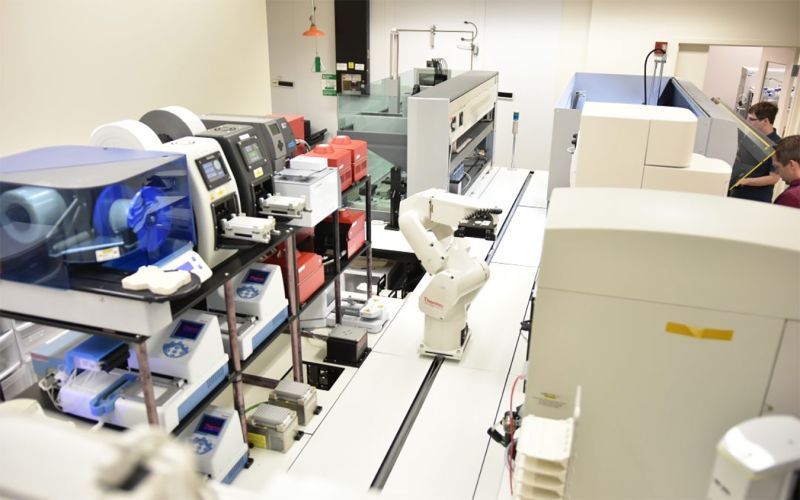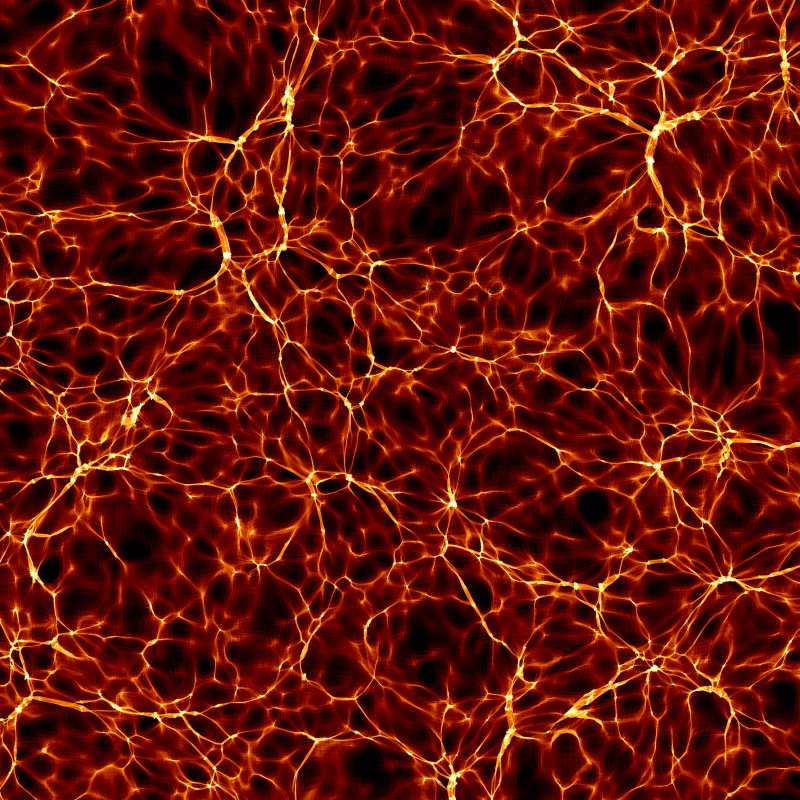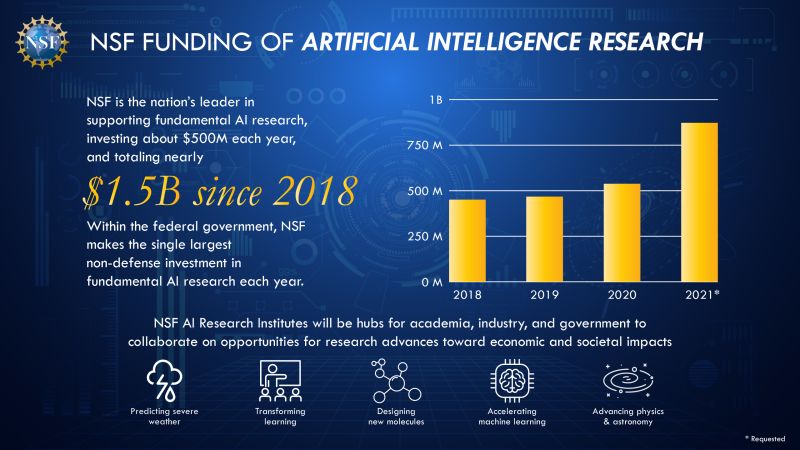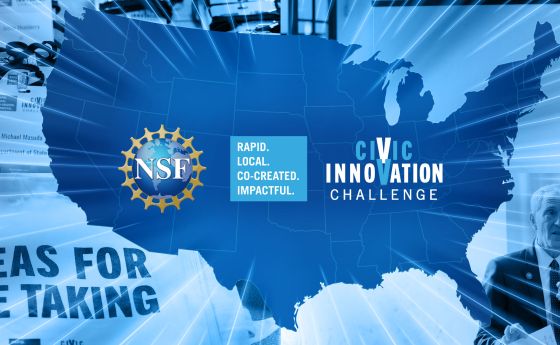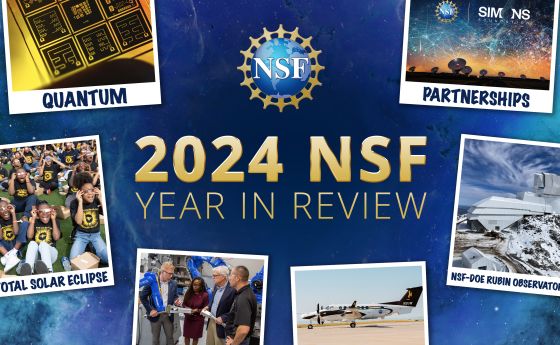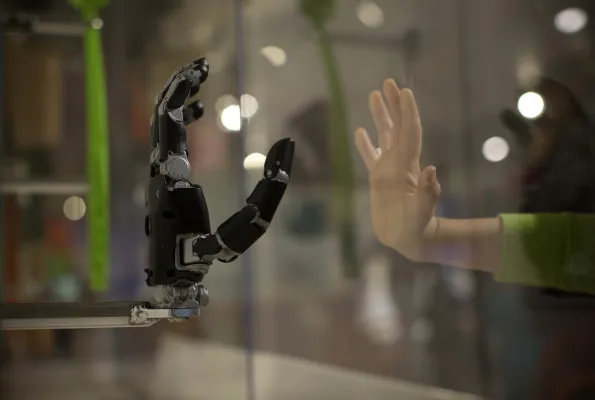
New NSF AI Research Institutes to push forward the frontiers of artificial intelligence
You open a letter from your grandmother. No money falls out, but you keep reading anyway.
Her “old-fashioned” handwriting is different from what you are used to, the cursive script filled with curls and other flourishes. It takes a minute to adjust, but your brain can easily make out the message: The neighborhood cats are still stalking her backyard bird feeder, and she loves you very much.
Your brain’s ability to decipher different types of handwritten text is extraordinary. It’s just one of many human abilities that scientists are inspired to replicate through the use of artificial intelligence. AI machine learning techniques rely on neural networks—layers of algorithms inspired by the human brain that enable incremental learning through mining large amounts of data.
It’s how you are able to deposit checks in your bank account by snapping a quick photo with your phone. And it’s how Netflix knew to recommend the Fyre Festival documentary based on the fact that you’ve viewed every episode of Tiger King twice—including that bonus quarantine episode.
The applications of AI extend far beyond handwriting analysis and binge-watching, though. Advances in AI research over the last several decades have enabled breakthroughs across nearly every sector of society, from understanding the cosmos to advancing healthcare to improving our transportation systems and enhancing manufacturing.
As the primary non-defense federal funder of fundamental AI research, the U.S. National Science Foundation has played a leading role in supporting basic and translational research, advancing and scaling computing resources that power AI innovations, as well as building education and workforce development for America’s AI researchers and practitioners.
In October 2019, NSF catalyzed a collaboration of federal agencies—including the Department of Transportation, the Department of Homeland Security, and the Department of Agriculture—and launched the National AI Research Institutes program. The AI Research Institutes represent NSF’s flagship investment in AI research and education. They are collaborative research and education hubs, bringing university researchers together with industry and government partners so that people, ideas, and approaches can be combined for maximum impact to address frontier AI challenges.
Today, along with the USDA’s National Institute for Food and Agriculture, NSF is announcing the creation of seven new AI institutes at universities—five funded by NSF and two funded by USDA. These institutes will leverage AI techniques to address pressing issues such as extreme weather preparedness, bioengineering technology, navigation, education, and robust food systems.
Below are descriptions of what each institute will focus on and why it matters to you.
NSF AI Institute for Research on Trustworthy AI in Weather, Climate and Coastal Oceanography
You may not realize it but, when you check your local forecast for the week, you are tapping into the power of AI techniques to mine massive quantities of data to produce models that predict weather patterns. The accuracy of such weather models becomes increasingly crucial when you consider the threats posed by extreme weather events such as tornadoes, tropical storms, hurricanes, or even large algae blooms. Being able to accurately predict when and where such events will occur can save lives and prevent significant impacts to the economy.
Along with addressing broad challenges in atmospheric and ocean sciences, this new AI institute, led by the University of Oklahoma, will work to improve the accuracy and reliability—or, trustworthiness—of AI techniques that underpin crucial weather models and predictions. The institute will conduct fundamental research into better understanding how AI algorithms transform raw data from extremely large and varied data sets into actionable guidance and predictions; this research will help scientists better communicate to the public the associated levels of accuracy and reliability. The institute will also offer AI training certificates to help cultivate an AI-trained workforce.
NSF AI Institute for Foundations of Machine Learning
As you navigate your car through a busy intersection, you notice a pedestrian standing beside the road with a bicycle. As your brain receives cues from your eyes, it is able to identify that the individual is mounting the bike and preparing to cycle across the road. You brake in anticipation. Self-driving cars, which draw on AI techniques such as machine learning, still struggle with many of the underlying tasks required to fully replicate your brain’s decision-making process.
This new institute, led by the University of Texas at Austin, will dedicate research efforts to addressing fundamental challenges and applications in machine learning that will underpin the development of safer and more reliable AI applications such as self-driving cars and many others. A key challenge is to build new, more efficient deep learning algorithms that can account for constantly evolving data and can incorporate changing contexts—in much the same way your brain is able to react and adjust course when it anticipates a hazard while driving. There are still many fundamental mysteries that remain when it comes to understanding exactly how these deep learning neural networks function. The team will work toward new theories that rigorously explain how algorithms successfully achieve optimal solutions in practice despite conventional statistical methods suggesting that they should not. New theories are also needed to produce reliable algorithms suitable for use in mission-critical and safety-critical applications. The institute will tackle these challenges among many others.
NSF AI Institute for Student-AI Teaming
As teachers grapple with some of the challenges of 21st century STEM education, AI techniques provide new opportunities to create more effective, engaging, and inclusive learning spaces. This new AI institute, led by the University of Colorado Boulder, will focus research on developing “AI partners” that will facilitate collaborative learning by interacting naturally through speech, gesture, gaze, and facial expression in classrooms. With growing classroom sizes and online learning, it becomes increasingly difficult for teachers to offer individualized instruction. AI partners, however, will be trained to assist by recognizing facial expressions and gestures to gauge interest and engagement as well as inferring from group discussions which students might feel excluded from conversations.
Such capabilities will require building an AI engine that can autonomously sense, model, and facilitate collaborative learning, and new algorithms that integrate speech and non-verbal signals to achieve deeper understanding of social interactions while learning. Through partnering with diverse stakeholders, the institute will develop new methods for broadening participation in the design of AI systems that promote equity and new ethical frameworks to guide system design and deployment.
NSF AI Institute for Molecular Discovery, Synthetic Strategy, and Manufacturing
Say you want to create a new generation of cheaper and more efficient photovoltaics—materials that harvest solar energy. Where do you start? Well, to develop any new materials, you need new molecules. But to develop new molecules you need a synthetic chemist with a mountain of expertise—there are a mind-boggling number of construction approaches and optimization considerations that go into the creation of each individual molecule. This new institute, led by the University of Illinois at Urbana-Champaign, is working to design an AI chemistry partner that would make this process easier and more accessible. The goal is to develop new AI techniques to streamline and accelerate molecular synthesis and the discovery of new materials. They are asking, How do you translate the expertise of a Ph.D. synthetic chemist into an AI tool that non-experts in synthetic chemistry can use?
By combining literature-mining and machine learning to teach AI what chemists know, the researchers are working to achieve better, more efficient solutions for molecule creation. They are also pairing the process of molecule design with automated, AI-enabled synthesis—think a production line in a molecule factory. This new molecule-making research ecosystem will serve as the training ground for the next generation of scientists with combined expertise in chemical synthesis and bioengineering who will employ AI techniques to enable the transformative discoveries of the future.
NSF AI Institute for Artificial Intelligence and Fundamental Interactions
Data drives discovery. But sometimes physics experiments produce too much data—so much data, in fact, that it’s nearly impossible for scientists to analyze all of it. How then can scientists decide which data to analyze? Making the right decisions can make the difference between discoveries made or missed. Many large experiments, such as those at the Large Hadron Collider, whose purpose is to discover new fundamental building blocks of nature, present exactly this challenge.
This new institute, led by a group at the Massachusetts Institute of Technology, will, among other things, work to build AI methods that incorporate basic physics principles, making data-analysis choices more targeted. They’ll explore the synergies between physics concepts and AI to improve basic understanding of AI techniques and how the techniques can help improve things such as neural network architectures—the basic building blocks of advanced machine learning. Building physics concepts into AI techniques will also assist physicists in performing difficult and sometimes intractable calculations, which in turn will serve as a framework for discovery. Since new insights often emerge from deviations in data, when things don’t look as expected, AI methods that are fine-tuned to look at physical systems will be able to quickly identify these outliers—potentially speeding the process of discovery.
Two additional institutes sponsored by the USDA, the AI Institutes for Next Generation Food Systems and Future Agricultural Resilience, Management, and Sustainability, are led by the University of California, Davis, and the University of Illinois at Urbana-Champaign, respectively. These institutes will focus AI research on addressing issues of molecular breeding, agricultural production, food processing and distribution, and nutrition. Additionally, they will push forward the capabilities of AI techniques to improve research in computer vision, machine learning, soft object manipulation, and intuitive human-robot interaction to solve major agricultural challenges including the environmental resilience of crops and the efficiency and welfare of animal agriculture.
Partnerships
AI technologies are advancing rapidly, presenting new challenges alongside new capabilities. NSF's investment in these institutes aims to make a big impact on both AI and society.
Robust partnerships among industry, nonprofits, and government agencies bolster the impacts of these investments. NSF is currently leveraging partnerships to understand how AI will impact workers and how to address such potential risks as algorithmic biases and job loss. NSF has formed several collaborations: with DARPA (the Defense Advanced Research Projects Agency) on novel hardware systems enabling real-time machine learning; with the multi-stakeholder non-profit Partnership on AI on sociotechnical AI systems; with Amazon on fairness in AI; and with Intel Corporation on machine learning for wireless networking systems.
Looking to the future, NSF is announcing its next generation of AI investments which will include new collaboration with government and industry partners to provide an anticipated $160 million to fund around eight new AI Institutes. These future NSF AI Institutes will continue and expand the multi-agency effort that led to the creation of the first generation of institutes that are described above. Together, they’ll serve as nodes in a broader network, distributed throughout the country, that will spawn new centers of AI leadership and leverage existing centers of excellence while working to make great impacts on addressing societal concerns and needs.

